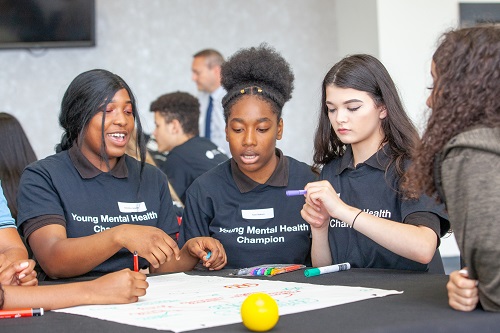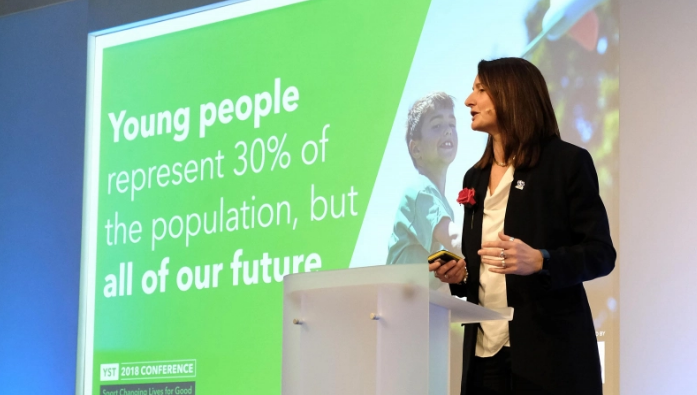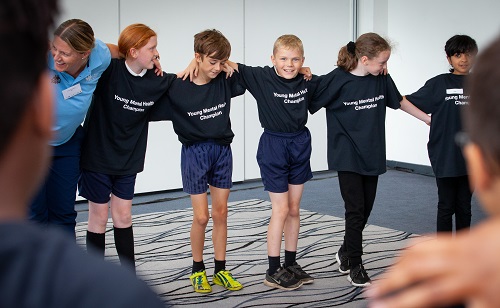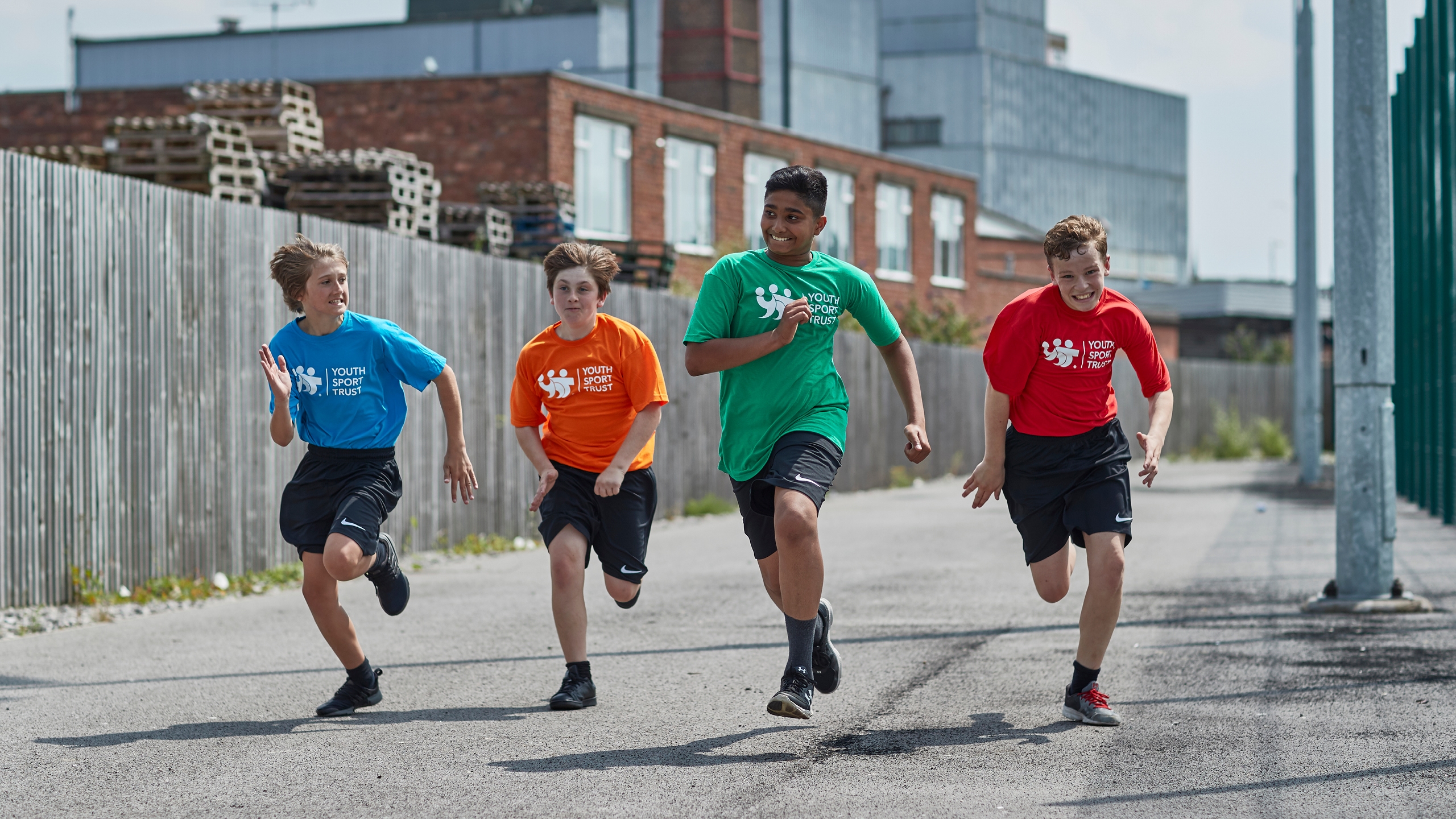 Each month ConnectSport works with the Sport for Development Coalition to create a 'call for articles'. Throughout September 2019 articles focus on Sport for Development’s role in physical education and school sport, and in this article we speak to Ali Oliver, Chief Executive of the Youth Sport Trust. Join us for a Twitter takeover with Ali on Monday, September 30 (8-9pm); follow the hashtag #SportForDevelopmentCoalition to join in.
Each month ConnectSport works with the Sport for Development Coalition to create a 'call for articles'. Throughout September 2019 articles focus on Sport for Development’s role in physical education and school sport, and in this article we speak to Ali Oliver, Chief Executive of the Youth Sport Trust. Join us for a Twitter takeover with Ali on Monday, September 30 (8-9pm); follow the hashtag #SportForDevelopmentCoalition to join in.
Hi Ali, thanks for speaking to ConnectSport. What role does sport for development have in education, and what are some of the barriers to it having a greater impact?
Ali: "For me, sport in education IS sport for development - otherwise it shouldn’t be in education. I am talking about how schools can use sport in a way that contributes to the overall education and life-skills development of young people while also supporting the wider school – improving important things like attendance, behaviour, positioning at the heart of community and engagement with parents.
"I believe the need for sport in our schools today is greater than ever before, given the range of physical, social and emotional issues that young people are facing. However, we are often trying to swim against a tide caused by people’s misunderstanding of the role of sport and what it has been in schools in the past.
"You have to consider the historical context of physical education in schools – from its origins in helping get men fit to fight in the Boer War, to becoming the responsibility of the Chief Medical Officer and later the Department for Education in the mid-1950s. More recently, our insight tells us Physical Education has become more about the teaching of sport than the teaching of children through sport. So when we’re talking about sport for either personal or school development there’s a lot of people whose experience of physical education wasn’t that at all, it was simply being taught sport.
"The other huge challenge is the current status of a whole range of subjects like sport and the arts in schools where they have been marginalised compared to English, Maths and Science, otherwise known as the core subjects."

How does any of that change? Do you think if sport for development became a more widely understood concept, then sport in education could follow suit?
"Yes I do, and I think it’s starting to happen. Within schools there is a growing awareness of what needs to be present for young people to thrive educationally. I think the penny is dropping for lots of schools that for many, a child’s health and wellbeing is the biggest barrier to learning.
"Traditionally we might have talked about the quality of teaching and learning as the single biggest driver of educational outcomes for a school but now, with all of the challenges that young people are facing – from mental health issues and isolation, to gangs and knife crime – it’s leading schools to consider the curriculum more and its intent: ‘what is the right education for children today? What do we need to equip them with?’
"More fundamentally, there has to be a change in how we are teaching physical education. ‘Sport’ and ‘physical education’ are one and the same thing in too many people’s minds. They don’t differentiate the two. We’ve got to change it so physical education is more like every other subject. It has to be fit for purpose for every single child.
"The emphasis should be about bringing those young people who have not yet developed physical literacy, or the competence they should have by a certain age, to a nationally appropriate level and equipping them to be active for life. To draw a parallel, a maths teacher’s job is to make sure young people are able to do the arithmetic they should be able to do at their age, particularly targeting those who are below that national standard or benchmark. We need that approach to physical education too if we want the potential of sport for development to be realised in education.
Is this therefore about reframing sport in people’s minds, as demonstrated by Youth Sport Trust’s recent campaign to reframe the concept of competition within school sport?
"Absolutely. We believe competition is one of the most powerful dimensions of sport. You need only look at the Olympic and Paralympic Games to see how – when you get individuals pushing themselves to the limit – they demonstrate qualities in themselves and bring alive the supporters and the nations they represent. It’s hugely powerful and for children, competition is a great way to develop aspirations, resilience, the respect of officials, and teamwork.
"At the moment, that opportunity to harness the great value of competitive sport isn’t afforded to every child and we think it should be. We need to make sure that when competition is introduced to children at a young age, it isn’t an exclusive club for the most talented and able. Competition is something everybody can participate in and benefit from. Not everyone can win and not necessarily every competitive environment has to lead to progression somewhere, but the simple act of going head-to-head with another person or team is a great learning environment.
"Through our reframing competition campaign, we’re encouraging people to take a fresh look at the outcomes we celebrate. For example, should we only celebrate the scoreline and the league table… or do we also celebrate the most valued player, the most skilful contributor, or the most respectful player on the pitch? In competitive school sports, can we combine the results of a fixture with other data that we have on young people, such as their attendance or behaviour? Some of the other ideas include things like equal playing time, or making the competitive environment more inspiring by using power plays when the losing team has the opportunity to score two points for every goal to even up the game. You know you wouldn’t do that in an Olympic Games, but school sport isn’t the Olympics. What we should be trying to do through competitive school sport is educate and develop young people, not just find out who is the most talented. There are other ways of doing that."

At a much broader, societal level, what is forcing this re-evaluation?
"Young people are facing more complex issues than I’ve ever known - and I’ve been in education and teaching for 30 years. We also know that young people are spending less time outdoors, they are less active, and are more socially connected through the virtual world than the real world. These things go together, don’t they?
"We need to reverse some of this. A bit less time on social media, a bit more time outside and a bit more time being active, and perhaps then we can slow that downward trend in physical, social and mental wellbeing. This is what Sport England’s Active Lives data is telling us. We know the most active children have the strongest sense of resilience, they are more often happy than those children who are less active and they have stronger social relationships.
"The evidence is there – if you look at data and the science – but it’s not really sinking in with parents yet. One key reason is that we don’t routinely report on these things at a pupil or child level. We certainly don’t report on children’s physical literacy, their physical activity levels, and whether a young person is where they should be in terms of their wellbeing at any given age. This is why declining childhood wellbeing is almost a silent disease.
"We believe there should be some very simple national benchmarks for physical literacy alongside subjective measures of wellbeing. With these in place, reported to parents and tracked nationally then I think we might see a shift across society.

"The dream would be a Government that would say ‘of course English and maths are core to education but so is a child’s health and physical development’. I think it would make a real difference if, instead of getting a report home that says your child tries really hard and can play x, y and z sport, it was a requirement of every school to publish and report on children’s progress in physical literacy, application of life-skills and wellbeing."
The wellness agenda is gathering impetus globally, so why isn’t this shift happening more quickly on a local level?
"You only have to open a newspaper each day and see the huge number of stories coming out about bad stuff relating to our children at a national and global level, but it doesn’t hit home. We have the national child measurement programme which weighs and measures children at the entrance to and exit from primary school, but there’s a whole range of other important aspects of children’s wellbeing and development which aren’t being measured or reported on in a meaningful way. Perhaps as a result, these issues are being tackled in a reactive way, rather than with a ‘prevention better than cure’ focus.
"It’s the same with exclusions. We need to get upstream of these issues and work out why some children are badly behaved and difficult to manage. It’s because of the lifestyles they’re leading and the world they’re living in. If you want to get upstream of the issue, then we have to get them doing things with other young people, get them outside and more active, getting rid of some of their hormonal aggression.
"Instead we’re in a situation where a young person can do 11 years of physical education and, if they don’t opt to do a GCSE or BTEC qualification in PE many have nothing to show for it at the end – not even a certificate, so it has no perceived value for young people, school and parents. We need people to understand the consequences of children not being active, just as we would do with any global issue. Young people are quite rightly worrying about plastics in the ocean but they haven’t quite got into worrying yet about the increasing likelihood of getting dementia at an earlier age.

"Parents and children brush their teeth everyday because they know what will happen if they don’t – they don’t want their teeth to fall out. We need that same level of awareness about the consequences of being inactive. It can have such a huge impact on the rest of our lives. It should be the norm for PE teachers to be talking to young people about the cognitive impact of being active and how it helps your decision-making and your memory, but I think we’re not quite there yet. Consequently, children don’t really know why and how long you have to be active for and what the wider value of physical education has for them today and in the future. Thirty years ago this was less of an issue because young people were still running around, riding bikes, climbing trees and there was no such thing as a mobile phone – but the world has changed and physical education has struggled to keep pace.
"Sport holds many of the cards for addressing the issues that young people face in education, we’ve just got to remove the block between what it currently is and what it could be. That’s why I think the Sport for Development Coalition, and the work that is going on through the hundreds of organisations that use sport for development, has got so much to offer to education… it’s just that education doesn’t realise it yet. If we could start to unlock what sport can do in a school, around belonging, mental health and social relationships – all those things which the sport for development sector knows it can do – then it would quickly become one of the most valued subjects in school."
To find out more, visit the Youth Sport Trust page on the ConnectSport directory. To add your organisation, contact hello@connectsport.co.uk.













